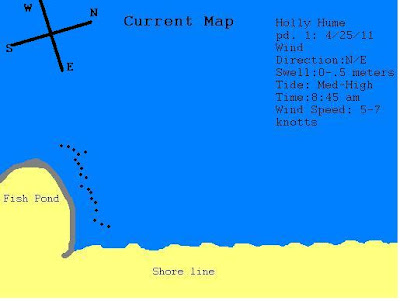Question: How diverse are the plankton species on south Maui?
Hypothesis: I think that we will find 4 types of phytoplankton and 10 types of zooplankton. If this is correct, the plankton on south maui will be somewhat diverse.
Materials: Plankton net, ID books, microscopes, slides, coverslips, pipette, pen/pencil
Procedure:
1. Gather necessary materials
2. Go to the beach
3. Use the plankton net: drag through water for 3 minutes
4. Come back to class and remove the jar from the net
5. Use a pipette to remove the plankton from the jar
6. Put the sample on a slide or petri dish depending on method used
7. Use the microscope to look at the plankton
8. Use the ID books to differenciate and clasify the plankton
9. Record your data
Data From Kihei Boat Ramp:
Temperature: 20.4°C
Wind: None-slight
Dissolved Oxygen: 0
Phosphates: 3
Nitrates: 3
Tide: Low
Turbinity: 0
Our mission was to determine the diversity among plankton in South Maui. I hypothesized that there would be about twice as much zooplankton as there was phytoplankton. While I don't remember the exact difference, the amount of phytoplankton identified seemed to be about the same as the zooplankton we identified.




















